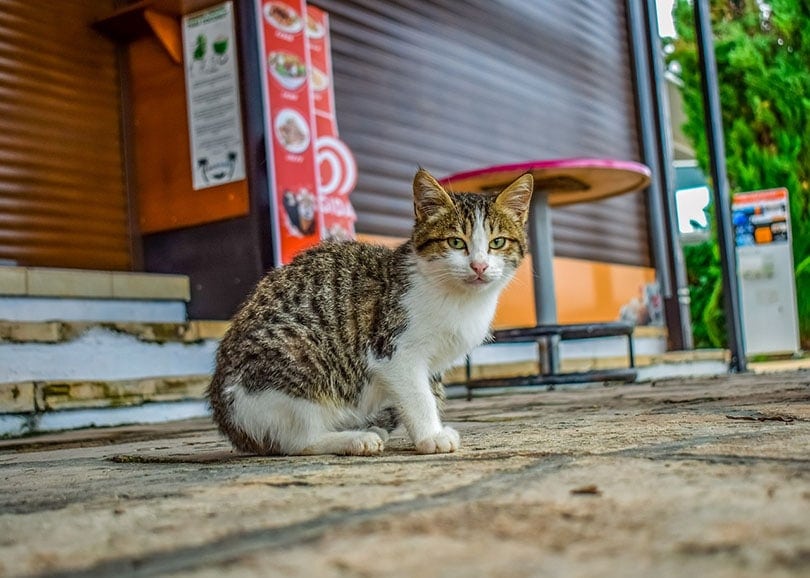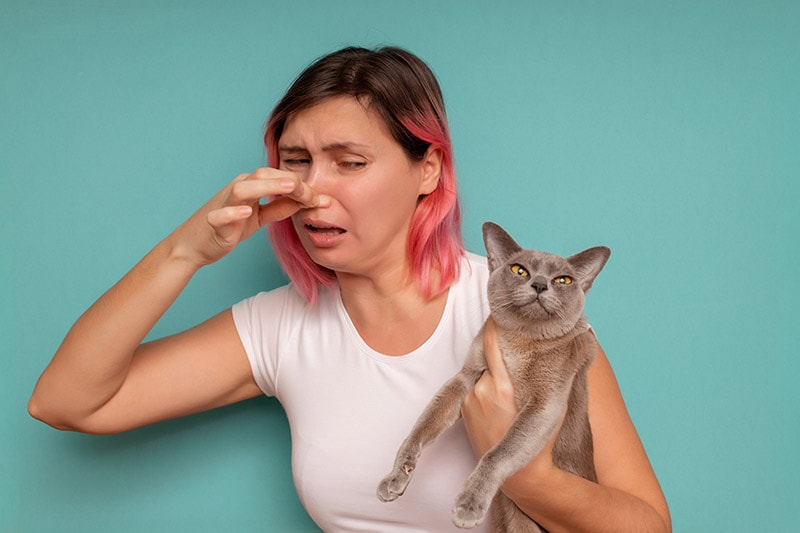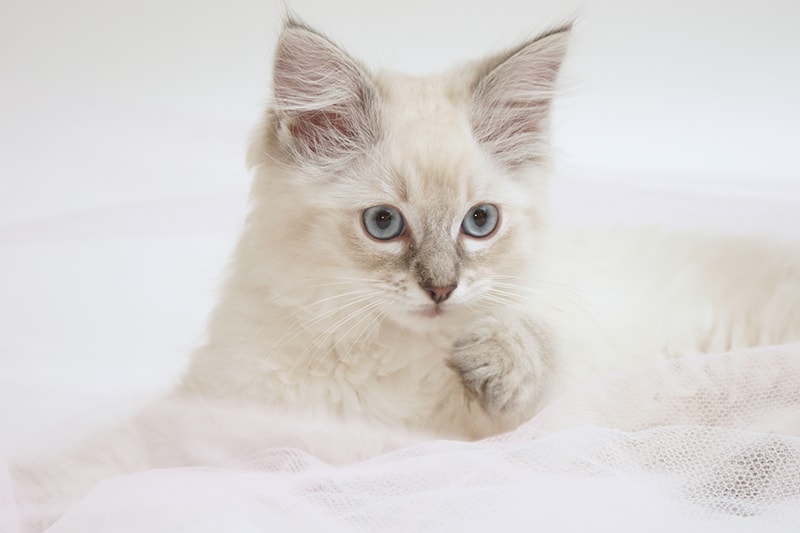Is Pothos Toxic to Cats? Vet-Reviewed Health & Safety Guide
Updated on
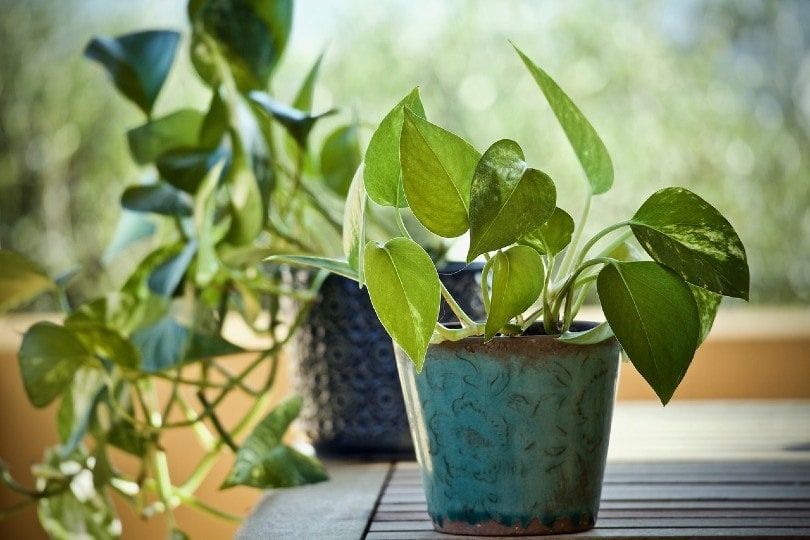
The pothos plant comes in many varieties and is popular for your home or garden. Plants make a lovely addition to your living space, and they can also provide some entertainment for your feline friend. Some cats like to chew on plants, which can be harmless at times. However, the pothos plant can pose a hazard for household pets.
Are pothos toxic to cats? Yes, pothos is highly irritant and toxic to cats and causes adverse effects, even if labeled “non-toxic.” In this article, you will learn more about this plant and what to do if your cat does nibble on part of it.
What is a Pothos Plant?
Native to Mo’orea in the Society Islands of French Polynesia, the pothos plant is a popular, hardy plant that does well in various environments. Characterized by an attractive trailing vine with heart-shaped leaves, this plant thrives in both bright, indirect light and low light, making it perfect for apartment living.
Pothos plants are also used in reptile enclosures to promote a bioactive environment and increase humidity. The pothos plant comes in several varieties, including the golden pothos, and may also be known as taro vine, ivy arum, and devil’s ivy.
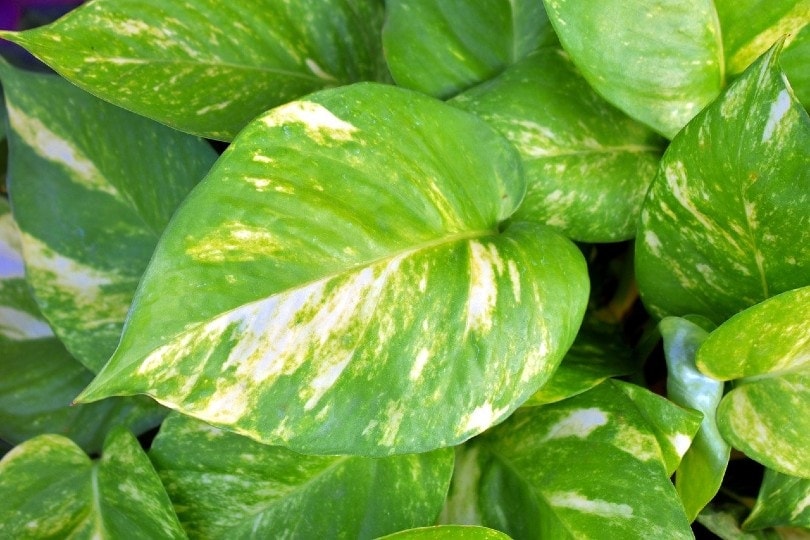
Pothos Toxicity in Cats
Pothos plants contain insoluble calcium oxalate crystals found in the leaves and stems. If a cat plays with the vines and bites or chews on the leaves or stem, the crystals enter the body and cause irritation.
Upon contact, the needle-shaped calcium oxalate crystals can cause symptoms such as intense burning and irritation of the mouth, tongue, and lips, general oral irritation, drooling, vomiting, and difficulty swallowing. These symptoms can be serious and painful for your cat. Eye and skin contact also result in pain and irritation. Chronic ingestion can result in the formation of calcium oxalate bladder stones.
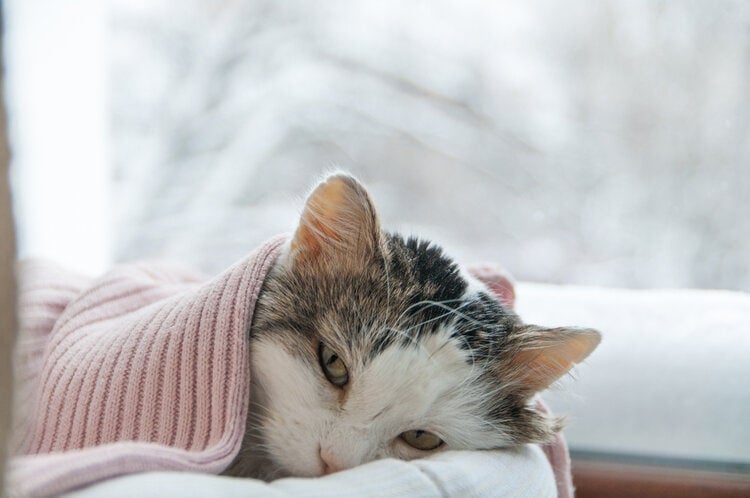
What to Do for Pothos Toxicity in Cats
If you have a pothos plant—or suspect you do—and notice your cat developing the symptoms of pothos toxicity, take it to a vet as soon as possible. Bring a sample of the plant stem and leaves to help your vet identify the plant and treat your cat. If that’s not possible, take a few pictures for positive identification. There’s no diagnostic test, so identifying the plant is the only way your vet can definitively diagnose your cat.
The diagnosis and treatment of pothos toxicity may vary based on your cat’s symptoms, but your vet will likely start with an exam that includes a thorough visual exam of the mouth, heart and respiration rates, and bloodwork. Other tests may be required, such as a urine test.
The priority of the vet visit is relieving your cat’s pain, which may be done using a thorough wash of the mouth and stomach. Your vet may also use dairy products to counteract the burning of the calcium oxalate crystals.
If your cat has an adverse response, your vet may use an antihistamine or steroid, to reduce swelling and prevent the airways from closing. This can happen quickly and become life-threatening, which is why it’s essential to get your cat to the vet right away.
Cats that experience digestive upset, such as vomiting or diarrhea, may be given medication to prevent vomiting and irritation to the stomach and digestive lining. Depending on the severity of symptoms, your cat may need to be hospitalized and managed with IV fluids and medications.
Most cats recover from pothos toxicity quickly and go home with their owners. If your cat experienced more severe symptoms, it might be a few days before you can bring it home and two weeks for a full recovery.
Your vet may recommend a special diet or soft, bland foods that will be easy on your cat’s sensitive stomach.
Preventing Pothos Exposure
Pothos toxicity is painful for cats, nerve-wracking for you, and intensive to treat at a vet. Though most cats recover well, there’s always a possibility of an adverse reaction or severe dehydration that can be life-threatening.
The best way to avoid all these possibilities is by removing pothos from your home and garden. This plant may look nice, but it’s not worth the potential risk of keeping it where your cat has access. There are other beautiful plants that you can have in your home that will not harm your kitty.
You may also be interested in:
- Are ZZ Plants Toxic to Cats? Vet-Reviewed Safety Facts
- 12 Plants That Are Poisonous or Toxic to Cats (With Pictures)
Featured Image Credit: sweetlouise, Pixabay



